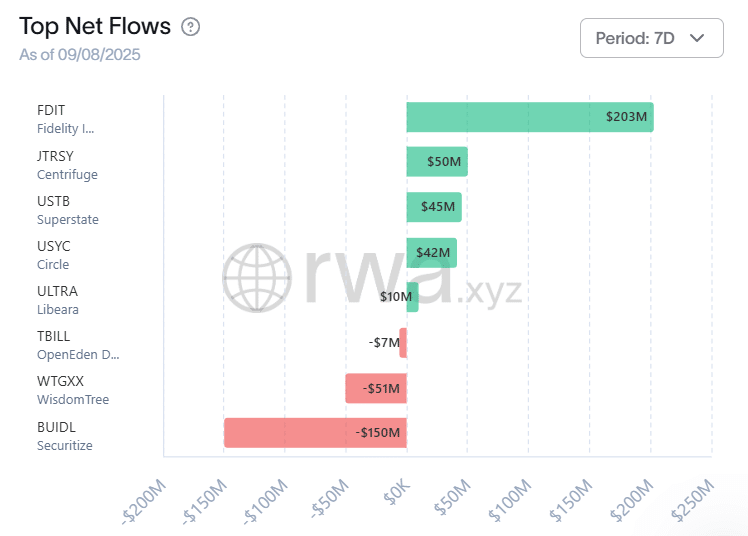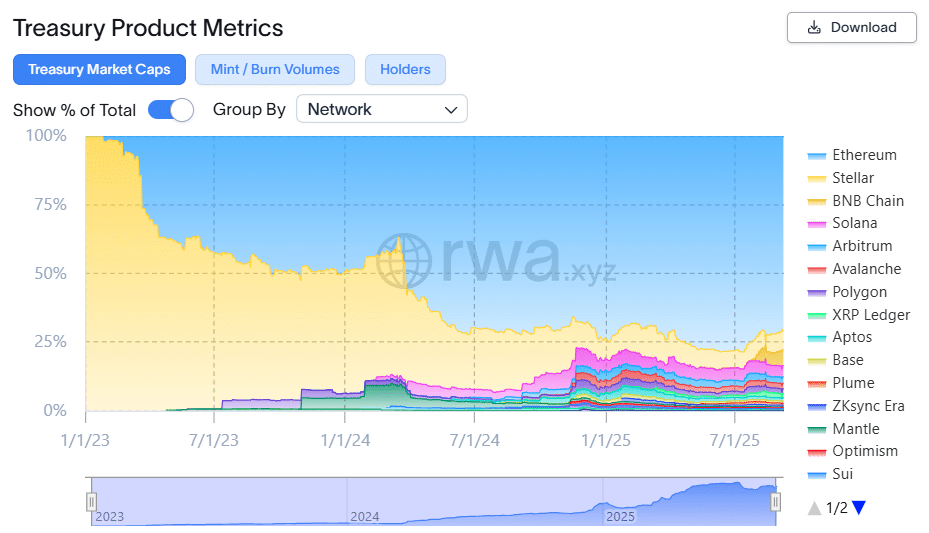Fidelity’s new Fidelity Digital Interest Token (FDIT) is a tokenized U.S. Treasury product launched on Ethereum that quickly amassed roughly $203.7 million, reinforcing Ethereum’s ~70% dominance in the tokenized Treasury market and adding institutional liquidity to DeFi’s RWA stack.
-
Ethereum controls ~70% of the tokenized U.S. Treasury market — ~ $5.3B of $7.46B total.
-
Fidelity’s FDIT reached $203.7M soon after launch, joining the top tokenized Treasury products.
-
BlackRock’s BUIDL remains the largest, at ~ $2.2B, but saw ~ $150M outflows in a recent 7‑day window.
Fidelity Digital Interest Token (FDIT) on Ethereum — quick take, $203M inflows, learn what this means for tokenized Treasuries.
What is the Fidelity Digital Interest Token (FDIT)?
Fidelity Digital Interest Token (FDIT) is a tokenized U.S. Treasury instrument issued on Ethereum that represents shares in a Treasury-backed vehicle. Launched to tap institutional demand, FDIT aggregates cash and Treasury exposure on-chain, enabling programmatic access to low-risk yield within decentralized finance.
How does FDIT affect tokenized U.S. Treasuries on Ethereum?
Fidelity’s FDIT strengthens Ethereum’s position as the primary settlement layer for tokenized Treasuries. Ethereum hosts about $5.3 billion of tokenized Treasuries, bonds, and cash equivalents — roughly 70% of the total $7.46 billion market. FDIT’s early $203.7 million inflow highlights growing institutional on-chain adoption.

Source: Rwa.xyz/treasuries (data referenced as plain text)
Why did FDIT draw rapid inflows while BUIDL saw outflows?
Market rotation and relative product fit explain the flows. In the recent 7‑day window, BlackRock’s BUIDL experienced about $150 million in outflows while FDIT collected fresh capital. Differences in product distribution, on-chain accessibility, and where issuers chose to launch (Ethereum, in FDIT’s case) can shift short-term liquidity between institutional offerings.
What does Ethereum’s 70% dominance mean for DeFi and RWAs?
Ethereum’s dominance signals strong liquidity pools, developer tooling, and custody integrations that favor institutional RWA issuance. Tokenized Treasuries account for roughly 27% of the total RWA token stack, demonstrating that low-risk, yield-bearing Treasury tokens are a major pillar of on-chain institutional activity.

Source: Rwa.xyz/networks/ethereum (data referenced as plain text)
Frequently Asked Questions
Is FDIT backed by U.S. Treasuries?
Yes. FDIT is structured as a token representation of a Treasury-backed vehicle, providing exposure to U.S. Treasuries and cash equivalents through on-chain tokens. Holdings are intended to reflect low-risk, government-backed assets.
Can institutions use FDIT in DeFi lending and liquidity pools?
Yes. Because FDIT is issued on Ethereum, it can interoperate with smart contracts and DeFi primitives that support tokenized Treasury assets, subject to each platform’s custody and compliance requirements.
Key Takeaways
- Ethereum dominance: Ethereum holds ~70% of tokenized Treasuries (~$5.3B of $7.46B).
- Fidelity’s position: FDIT reached ~$203.7M soon after launch, entering the top tokenized Treasury products.
- Market dynamics: BlackRock’s BUIDL leads overall with ~$2.2B but saw ~ $150M outflows in a recent 7‑day period; on-chain rotation is reshaping market share.
Conclusion
Fidelity’s FDIT launch on Ethereum underscores continued institutional demand for tokenized U.S. Treasuries and reinforces Ethereum’s leading role in RWA issuance. With roughly $5.3B of Treasury tokens on Ethereum, FDIT’s momentum could increase liquidity across DeFi, supporting broader institutional integration. Follow on-chain flow data and issuer filings for ongoing updates.
Published: 2025-09-08 • Updated: 2025-09-08 • Author: COINOTAG
